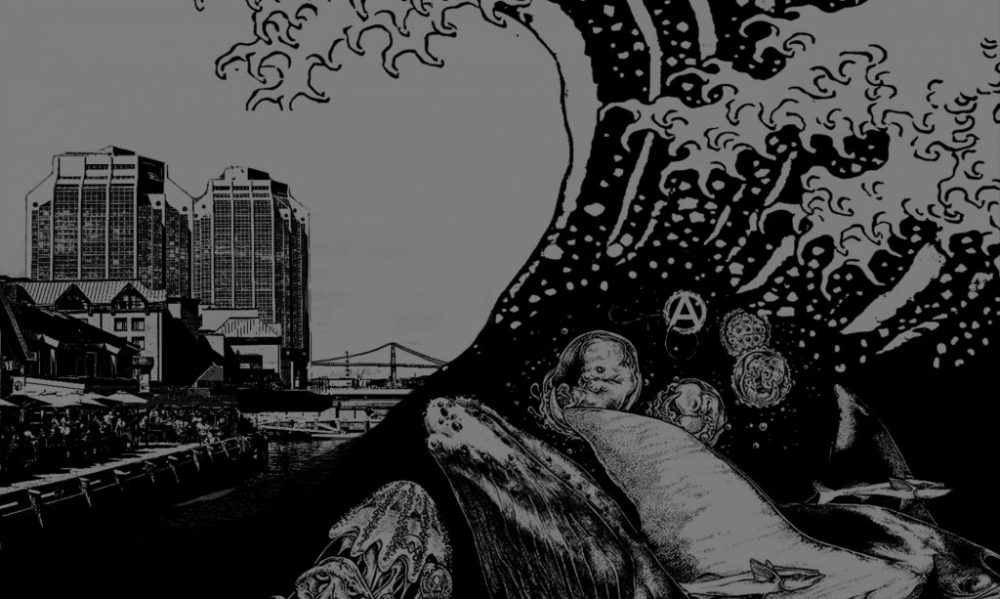
From Athens Indymedia
While the Greek state – like many other European states – is ramping up the pressure on its population to get the Covid19 vaccination, many seem to have ceded to this imposition of “making the responsible choice”. Let it be clear that we think individuals can have legitimate reasons to get the vaccination. We do not hold a moralistic judgment on getting vaccinated or not. But we keep on being reluctant. We think that the whole discourse about taking responsibility actually aims to give greater powers to the state by creating a dual society with privileges for those who comply and sanctions for those who don’t want to or cannot comply. This means a reinforcement of control and inequalities.
Believe the leaders
We don’t think we have to dwell on this very long. We have been forced to wear masks while walking alone in a park. We have been fined for being on the street at night while the metros were overcrowded during the day. We have been insulted for sitting on the squares while the indoors work places were running at full capacity. And we have seen them cynically calculating the costs of providing extra hospital beds against shutting down parts of the economy. We have seen them opting to hire more cops while the health of people was at stake. We have seen them trying to smother any form of protest while ramming through more exploitative and oppressive policies. They have lost all credibility and they know it, the only thing they can still do is twisting our arms and blackmailing us.
Believe the data
We are told that the data are clear, that getting the vaccination is the safe(r) choice. But even if we might accept that the existing data on vaccinations is correct, there is a whole lot of data we don’t have (yet). The first thing that springs to attention is that all the available vaccinations are temporarily approved through an emergency process. None of the Covid19 vaccinations are fully approved and they cannot be because we don’t have any data on the long-term effects. We can make assumptions based on other similar vaccinations in the past (although the vaccines based on the new mRNA technology don’t have such a history), but there are no guarantees about the long-term. Everyone taking the vaccination should be fully aware of this. And already because of this fact alone any obligation or pressure to take the vaccination should be ethically wrong.
The data we do have about the vaccines are mainly from trials in labs and controlled settings. These tests have to be set up in highly controlled conditions (even if they’re tested on people living their daily life) to make any meaningful conclusion about cause and effect. Of course, real life does have many complications, interferences, unforeseen events etc. Thus these data can only predict the behavior of vaccinations in a very limited way. Indeed, we have seen the recommendations on who not to give certain vaccinations to and the lists of possible side-effects being updated while the vaccinations are being administered in the real world and unforeseen problems start to occur. On this scale side-effects that only have an effect on a tiny percentage of vaccinated people can mean in reality a collateral damage consisting of thousands of people. Even at the best of times, modern medicine has far from an impeccable track record when it comes to respecting life in all of its diversity, nuances, complexities and totality. Make no mistake, this is an ongoing experiment on a massive scale.
Believe science
We are told to have confidence in science. But even when we only look at the scientific recommendations during this year-and-a-half of Covid19 pandemic, that statement is naive or dishonest. At the beginning of the pandemic in Europe, the wearing of masks was strongly advised against. The theory then was that the virus spreads by contact and thus disinfecting was the right answer (and there was a shortage of masks so they were reserved for hospital staff). Months later this opinion changed and the consensus now is that the virus spreads through the air and not contact. Suddenly masks became the answer to everything. Nevertheless, we also keep on disinfecting everything (instead of ventilating – this is called the sanitary theater, where the impression of safety matters most). This is an example that demonstrates that science can get it wrong and that broader society can take even a longer time to realize it was wrong.
Another example from the pandemic about how we should not just trust science is the fuzz around the lab-leak theory. Early on in the pandemic an article cosigned by many scientific specialists on the matter, declared the hypothesis that the Covid19 virus could be coming from a laboratory as total nonsense. At the time this article became the basis for mainstream media, social media, politicians and specialists to label any mention of the lab-leak hypothesis as a conspiracy theory. It took a whole year, at a time when this virus was nevertheless on the front-pages every day, before some scientists and journalists looked more critically at this article to conclude that the main piece of evidence was irrelevant and that some of the authors had a direct interest in keeping up the good name of (the methods of) the laboratory that would be the first suspect in the lab-leak hypothesis. Now it’s widely accepted that a lab-leak is possible and merits to be investigated (to be clear neither the lab-leak hypothesis nor the zoonotic hypothesis have been proved or refuted, they both are probable to a more or lesser degree). This is an example that shows that the scientific method isn’t as robust and foolproof in reality as it claims to be. Consensus that shifts due to non-scientific arguments (political opportunism, financial interests, etc.), a small circle of highly specialized scientists that don’t want or don’t have the time to control each other, etc. The philosophy and sociology of science have already demonstrated the gap between the ideology of science and its reality since the 2nd half of the 20th century (see for example Paul Feyerabend and Pierre Thuillier). Still people seem to hold on to a very naive conception of what scientists do.
Believe in group immunity
We are told to mobilize to reach group immunity and “be free” again from the virus. For this the aim of vaccinating 70% of the population is put forward. But actually this number dates from before the appearance of variants (like the Delta one) that are more infectious and against which the vaccinations are less effective. Let’s also keep in mind that the vaccines are designed to limit the severeness of the sickness, and the reduction of infections is only a side-effect (and most non-mRNA vaccines seem to be not very good at it). Given these new variants, many experts believe now that actually 80 to 90% of the population should be vaccinated to reach group immunity. This number would mean that – if we still consider it unethical to massively give minors a new and not fully understood vaccination and that some people can medically not get vaccinated, the whole rest of the population would need to get vaccinated. Any public policy that needs 100% compliance to succeed is doomed to fail.
Another factor is that immunity decreases over time. There’s already talk of booster shots after a 6 month or 9 month period (Would that be one time, or should it be repeated every half year, or every year? At this moment we don’t know), making the opportunity for failure even bigger.
Moreover, since this is a worldwide pandemic of a very transmittable virus it seems very unrealistic that a country or region could reach group immunity on its own. Big parts of the world have hardly enough supplies or the infrastructure to vaccinate a small part of the population, let alone the big majority of it. They also mainly rely on vaccines that are less effective at stopping infections. The chances of eradicating this virus are nonexistent. At this point it has reached its endemic phase, meaning that Covid19 will start to behave like other corona varieties with their seasonal epidemics. Group immunity is the latest carrot that is being dangled in front of our eyes, it will sooner or later be replaced with yet another one to make us believe that we can achieve “freedom” if only we follow.
Be responsible
The issue of group immunity (or at least vaccinating as many people as possible) points towards the question of who gets the vaccines. In many regions people that do run a risk of severe sickness from Covid19, don’t have access to health care and want to get vaccinated, are not getting any vaccination. While in Europe people that don’t even have a big risk of developing mild symptoms and have an infinitely small risk of severe illness have millions of vaccinations reserved for them. The hoarding of vaccines will increase again with the need for boosters. The fact that the WHO doesn’t want to recommend boosters now seems primarily inspired by these kind of worries. The responsible choice or the reproduction of global inequalities?
The building of group immunity and the “war against the invisible enemy” rhetoric goes in practice together with a strict control of access to the territory and an intensified population management. It seems like we have come to a situation where the so-called progressive side of society is now in favor of controls on movement and closed borders (of course, they will hardly notice it themselves since they possess the right documents to move “freely”). The responsible choice or an intensification of surveillance and exclusion?
If we have learned anything from the past decades – 9/11 and the threat of terrorism, the financial crash and the threat of bankruptcy, austerity and the threat of social cannibalism, refugee boats and the threat of racist pogroms, climate change and the threat of ecological disasters etc. – is that a position that doesn’t radically opposes the power of the state (no matter who controls it), will eventually only reinforce it and thus open up the way for the next cycle of crises provoked by the state and capitalism and their management by the state and capitalism.
Anarchists
Athens, Mid-July 2021



































